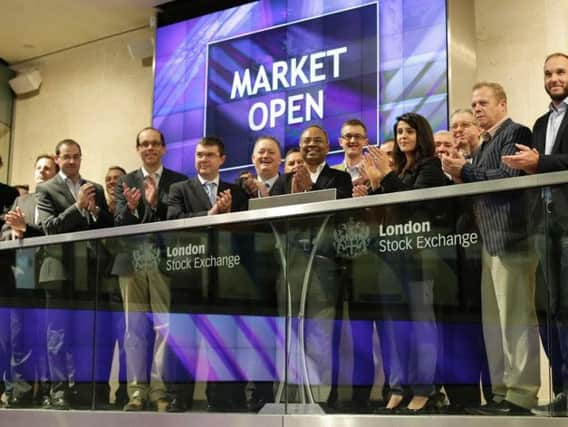Can this bull market last or are we in for a crash?


Are we in a bubble on the verge of'‹ '‹popping? Can equities still produce decent returns from here?The most profound bull market in history, in the 1990s, coincided with a long period of stable'‹ '‹inflation, a demographic tailwind from baby-boomers and rapid economic growth. At some point,'‹ '‹fundamentals gave way to the tech bubble irrationality of the late 1990s. Hundreds of companies'‹ '‹promised to change the world by harnessing the power of the newly created internet. This bull too'‹ '‹crashed, with equities down 44'‹ per cent'‹ from 2000 to 2003.The key question for investors centres on exactly when equity market bull markets become bubbles.'‹ '‹Although bubbles have taken different forms affecting all manner of investments, they do share'‹ '‹some common characteristics. First, valuations are typically excessive – well above long-term'‹ '‹averages. A surge in economic productivity – stemming from some genuine technological or financial'‹ '‹innovation – leads investors to believe that this time is “different”, justifying their excessive'‹ '‹valuations.Second, '‹G'‹overnment fiscal or monetary policy tends to encourage risk-taking behaviour. Third,'‹ '‹sentiment at the time is typically overly-optimistic, perhaps even euphoric. Successful investments'‹ '‹made during the momentum of the bull-run make investors less wary. Animal spirits are stoked;'‹ '‹investors simply do not want to miss out on gains.Although each bubble is different, these three traits prevail more often than not, and should act as'‹ '‹warning signs for future bubbles. But where are we now?Every bull market in history has witnessed multiple expansions, where investors are increasingly'‹ '‹willing to pay more for each unit in corporate earnings. On some measures, such as the cyclically-adjusted price earnings ratios (CAPE), US stocks are at their third most expensive level in history,'‹ '‹surpassed only by valuations during the roaring 20s and the tech bubble. This is worrying.The colossal efforts of central banks continue to underpin equity and bond markets and the resulting'‹ '‹lower yields on government bonds make equities appear more attractive in comparison. Many'‹ '‹investors are holding more equity risk in portfolios to get “pre-crisis returns”. This is undeniably one'‹ '‹of the pillars of previous bubbles.The collective emotional state of investors is perhaps the hardest to factor to gauge, let alone'‹ '‹quantify. As stock markets keep marching to new highs, few would describe the mood amongst'‹ '‹investors as complacent. If anything, this long-running bull-market has been characterised by'‹ '‹caution, and some key sentiment indicators are displaying “oversold” characteristics (eg'‹,'‹ hugely'‹ '‹overvalued safe-haven assets such as government bonds).We are well aware that valuations are not cheap. We also note that current policy environment has'‹ '‹tilted the investment landscape towards undue levels of risk.However, equities are not overvalued across a number of measures (eg'‹,'‹ price-to-earnings; price-to-book). The asset class continues to be supported by strong momentum. Moreover, while volatility is'‹ '‹low, few would describe the mood amongst investors as complacent.In investing, things are rarely black or white. At present, while US equities are looking stretched, we'‹ '‹find better value in other regions such as European and emerging market equities. But equities have'‹ '‹had a strong run and we live in a low return world, there’s no escaping from that fact. Nonetheless,'‹ '‹we remain mildly sanguine, and still consider'‹ '‹equities as a core asset class, supported by a strong'‹ '‹economic backdrop, positive momentum and attractive fundamentals. Should any of that change,'‹ '‹we will adjust our portfolios accordingly.
Following the acquisition of Kleinwort Benson by Societe Generale in summer last year, SGPB'‹ '‹Hambros and Kleinwort Benson will be legally merged in 2017 under the name Kleinwort Hambros.Led by Chris Perkins, Kleinwort Hambros, which is based on the Harewood Estate between Leeds and'‹ '‹Harrogate, provides wealth management, fiduciary, investment and financial services planning'‹ '‹services for its clients. It believes that Yorkshire will play a central role in the success of the Northern'‹ '‹Powerhouse.